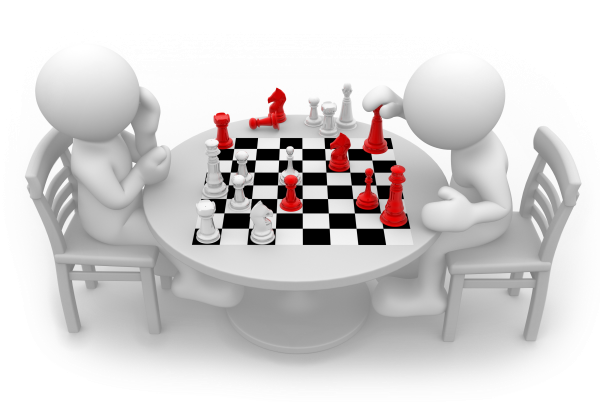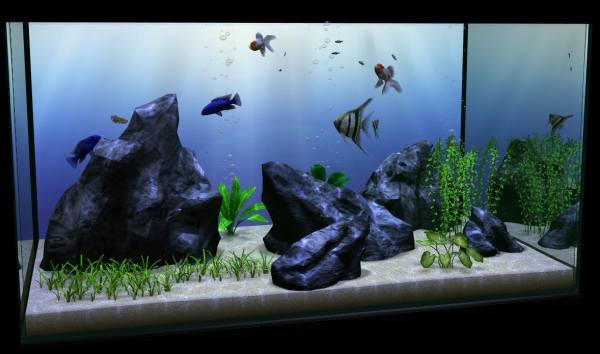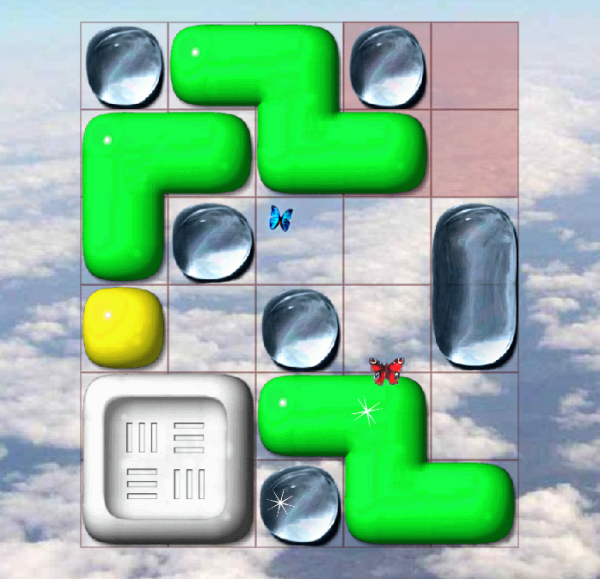Copyright Notice: This article is Copyright AI Factory Ltd. Ideas and code belonging to AI Factory may only be used with the direct written permission of AI Factory Ltd.
This article serves as a companion piece to our recently published work on Generative AI. The concept of gamification has been present throughout civilization and has played a significant role in both entertainment and education. Our company is dedicated to the world of gaming and this is reflected in our exploration of this topic. The connection to Generative AI lies in the use of ChatGPT, which contributed to the development of some of the material presented in this article.
Prelude
Gamification has been a constant presence in my life. From a young age, many of my activities incorporated game-like elements that facilitated learning and sparked creativity. I recall gazing at fields of buttercups and daisies and imagining them as opposing armies. I would strategize about which side had the advantage and how each sub-group might manoeuvre. This was a natural pastime for me.
Even simple ball games had the goal of achieving a high score. For instance, I would throw a ball against a wall and try to catch it without dropping it, counting how many successful catches I could make. This was engaging and helped train the neural net in my brain to improve my coordination.
As I grew older, I created more complex games to play with friends and even organized a 24/7 charity event that lasted for three days to raise money. All of these experiences enhanced my cognitive abilities. All these experiences added to my cognitive abilities. My genes had been evolved over millennia to exploit this inclination towards games to improve my skills.
In this article, we will explore how AI Factory specifically contributes to gamification. But first, let's take a look at the history of the subject with reference to our games.

A Brief History
Gamification is everywhere these days. The earliest examples can be traced back to ancient civilizations. For example, the ancient Chinese game of Go (one of AI Factory's games), which dates back over 2,500 years, was used as a way to teach strategy and critical thinking skills. And in ancient Greece, the Olympic Games were essentially a giant competition between city-states, with athletes vying for glory and honour.
Fast forward to the 20th century, and we start to see more modern examples of gamification. One of the earliest examples was the Boy Scouts of America, which was founded in 1910. The organization used badges and ranks to incentivize young boys to learn new skills and take on challenges. For example, if you wanted to earn the Camping merit badge, you had to demonstrate your ability to plan and execute a camping trip, including setting up a tent, building a fire, and cooking a meal outdoors.
In the 1950s and 60s, game shows became incredibly popular on television, with shows like "The Price Is Right" and "Jeopardy!" capturing the imaginations of millions of viewers. These shows used game-like mechanics such as scoring, time limits, and prizes to create a sense of competition and excitement.
But it wasn't until the rise of video games in the 1970s and 80s that gamification really started to take off. Games like Pac-Man and Space Invaders became cultural phenomena, and soon businesses were taking note of the addictive power of games. In 1985, McDonald's launched the first-ever Happy Meal, which included a small toy as an incentive for kids to choose their food over competitors. And in the 1990s, loyalty programs such as frequent flyer miles and credit card rewards programs began to proliferate, using points and other incentives to encourage customer loyalty.
In the early 2000s, gamification began to make its way into the workplace. Companies began using game-like mechanics such as leaderboards, badges, and rewards to motivate employees and increase engagement. For example, Salesforce, a leading provider of customer relationship management software, created a program called Trailhead that uses badges to incentivise employees to learn new skills and earn certifications.
But it wasn't until the advent of smartphones and social media that gamification really took off. Apps like Fitbit and MyFitnessPal use game-like mechanics such as points and badges to encourage people to exercise and eat healthy. And social media platforms like Facebook and Instagram have turned likes and shares into a form of social currency, creating a sense of competition and validation for users.
Today, gamification is everywhere, from education to healthcare to finance. We have apps that reward us for drinking water, sleeping enough, and even meditating. We have games that teach kids how to code and adults how to invest. And we have workplace programs that turn training into a game, with employees competing to earn the most badges and climb the leaderboard.
Why is Gamification there?
We all know this, but it is worth repeating. Gamification is a universal concept that is not only present in humans but also in other species. Even beetles have been shown to engage in gameplay. This universal imperative allows a species to develop skills such as physical agility, strength, mental abilities, and social interaction. It can also encourage exploration, which can lead to the discovery of new resources and improve chances of survival.
Collecting awards or badges is another activity that can elevate an individual's status within their community and increase their chances of propagating their genes. The collection of objects is also a behaviour that is deeply ingrained in humanity. Evolutionary theorists suggest that one reason for collecting could be a way for a man to attract potential mates by signalling his ability to accumulate resources.
These behaviours are inherent properties of our species and can be used to engage and motivate individuals. While some may view this as exploitative, engaging in these activities can also provide pleasure through the release of dopamine. In many cases, there are real benefits to engaging in these activities, such as the development of mental skills or social abilities.
Open-world games, such as the new Zelda game and older Gothic 3, offer opportunities for personal development through open interaction with these complex open worlds. Games that allow players to interact with non-player characters (NPCs) can help develop some social skills and allow players to exercise their role in different situations. These games also offer players the chance to increase their status, another useful skill from a Darwinian perspective.
In conclusion, gamification and collecting behaviours are fundamental aspects of human development and can provide significant benefits beyond simple pleasure.
AI Factory and Gamification
Many of our titles are classic games whose role on gamification can be found elsewhere, but some of the titles are unique to AI Factory and we can examine the gaming elements in these. We can also link these to evolutionally developed advantageous skills.

1. The Aquarium
This was an early title completed for the Japanese company Unbalance. The primary objective was aesthetic, so that you could sit and watch fish swimming in your emulated fish tank. However to be a successful title, it needed challenges to engage the player and to hold their attention. These were as follows:
| 1. | Feeding | |
| This is a Tamagotchi-like component requiring you to make sure your fish did not die. This brings out the nurturing instinct and as a game element resonates with the inclination to look after your children and family. This is mainstreaming an aspect of our inherited learned genes. | ||
| 2. | Breeding | |
| This is linked to feeding above but focusing on the vital genetic skill of successfully creating progeny. | ||
| 3. | Collecting achievement badges | |
| This is not so easy to link to genetics, but perhaps it reflect the capacity to take on tasks and seeing these through. This should contribute to general skill levels. In this case there is no obvious status component as there are no other players or NPCs to impress! |

2. Sticky Blocks
This is one of our original titles that was released on the mobile platform. It shares the same basic mechanic as its predecessor, Move it!, but extends the concept by adding collectible items and a moving mechanic that can render the game unsolvable if an incorrect move is made. This is achieved through the use of liquid gel pieces that fuse into solid pieces when they touch, potentially creating an unsolvable puzzle.
In both games, the objective is to move a base square piece to a designated position on the other side of the board by manoeuvring other obstructing pieces out of the way. Sticky Blocks and Move it! are natural successors to Nobuyuki Yoshigahara's famous "Rush Hour" puzzle, which originated as a physical puzzle in the 1970s and eventually migrated to mobile versions. A key difference between Rush Hour and our games is that Rush Hour only allows movement in one dimension, while Sticky Blocks and Move it! allow movement in two dimensions, providing a more natural physical puzzle experience.
| 1. | Puzzle Solving | |
| This was, of course, the primary directive and tests the user's ability to manipulate the pieces in 2D physical space to solve the puzzle. This develops analytical skills in mentally manipulating the pieces to reach configurations that allow progress. Of course you can just keep moving pieces and hope to move closer to a solution, but to be successful you do need to plan your moves. This all contributes to analytical skills. | ||
| 2. | Analysing when the puzzle cannot be solved | |
| This requires advanced analytical skills as players must be able to recognize when the puzzle has become unsolvable due to the fusion of liquid gel pieces. This can be achieved by continuing to attempt to solve the puzzle or by logically deducing that it is impossible for the base piece to bypass the newly fused pieces given the existing configuration of other pieces. This requires a higher level of cognition and problem-solving ability. | ||
| 3. | Collecting items | |
| These might be items such as jewels, butterflies, or cute animals that appear on the squares. These items earn credits that can be used to purchase hints or bombs to help solve the puzzle. While these power-ups are not necessary to complete the game, players enjoy collecting them even if they have no intention of using them. Collecting these items also helps develop reaction time and coordination skills as players must quickly capture moles that pop up on the board or chase butterflies until they land on a square and can be captured. |
3. Our PC games, including Friday Night Pool, Chess and Darts
These games feature multiple levels of play and hidden assets known as "Easter eggs" to encourage exploration. These Easter eggs are whimsical and unexpected, such as a pool cue being replaced by a carrot. The game environments also contain features to discover, further encouraging exploration. For example, in the room where chess is played, there is a window through which players can spot a hot air balloon floating by on the horizon if they pay attention.
These hidden assets and features add an element of surprise and discovery to our games, providing additional motivation for players to explore and engage with the game world.
4. All our other games, including Spades, Chess, Backgammon and Hearts
Our other games are based on classic games but feature multiple levels of play to encourage players to build on their skills. Having only a top level would discourage players who might give up if they keep losing. In addition to multiple levels of play, our games Spades, Gomoku, Euchre, Hearts, Gin Rummy, and Tic Tac Toe also provide avatars for opponents, allowing players to identify with their opponent and imagine them as real individuals. This can create a sense of empathy between the player and opponents.
To create an engaging gaming experience, we focus on providing a pleasing aesthetic, motivation to progress, and a user-friendly interface. The latter is particularly important and often overlooked. In our games, we go to great lengths to present gameplay in a consistent and agreeable manner across all our titles. Ensuring that controls behave as expected is crucial as unexpected behaviour can be surprisingly annoying for players!
Conclusion
It can be seen from the historical record above that gamification is often used by employers or merchants to make an activity addictive and increase engagement. In the gaming industry, this strategy can provide financial benefits for the game developers at the expense of the player. While developing skills through gameplay can be beneficial, playing for hours on end can pose a health hazard and prevent players from engaging in other important activities. It can also be psychologically damaging if players become obsessed with the game to the point of neglecting other aspects of their lives.
In the gaming industry, there is a term known as "a whale," which refers to a player who spends a significant amount of money on a game, often more than they can afford. This can reach absurd levels where in-game resources can cost thousands of pounds. These resources may allow players to progress in the game or provide a sense of prestige by owning something that others do not have.
While we do not cross any boundaries in our games, many companies do. Creating games that induce "whale" behaviour should be discouraged. Players who spend too much should have restricted access to purchases and receive warnings about their spending habits. Very expensive items should also be avoided as they can induce envy in players who cannot afford them.
In conclusion, while gamification has many benefits, it is important to establish internationally accepted ground rules and limitations to prevent exploitation and protect players' well-being.
We continue to follow a responsible level of inducements in our games, so have not indulged in any of these more suspect practices.
Jeff Rollason - May 2023
